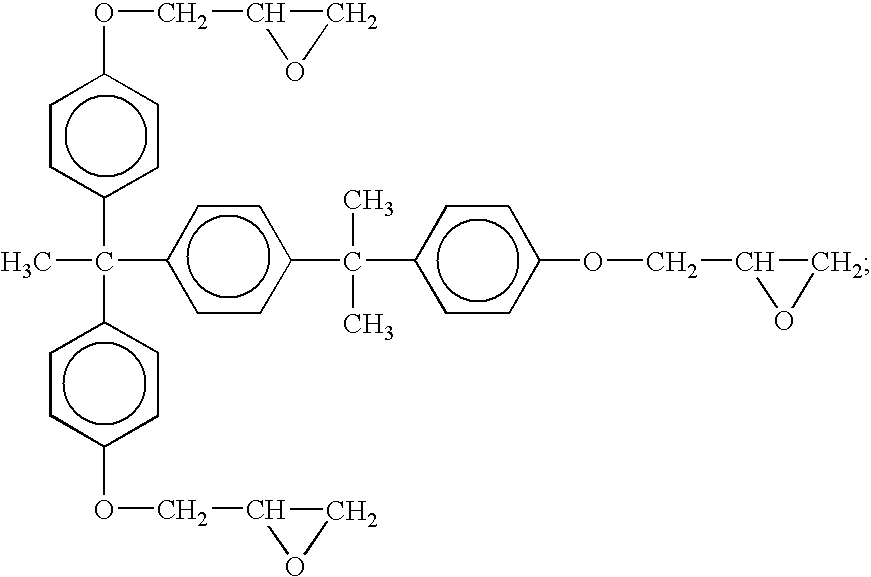Epoxy resin composition using latent curing agent and curable by photo and heat in combination
a technology of epoxy resin and curing agent, which is applied in the field of epoxy resin composition, can solve the problems of damage to electronic elements, etc., and the curing remains are not deep enough, and achieve the effects of low viscosity, low viscosity, and provisional curability
- Summary
- Abstract
- Description
- Claims
- Application Information
AI Technical Summary
Benefits of technology
Problems solved by technology
Method used
Image
Examples
examples
[0041]In the following, the present invention is explained in detail by referring to Examples, but the present invention is not limited by these. The indication means part(s) by weight otherwise specifically mentioned.
[0042]Samples of Examples and Comparative examples were obtained with the formulation shown in Table 1 and mixing the each component by using a mixer. Each component is as follows.
Bisphenol A epoxy resin; epoxy equivalent: 165 g / eq
Bisphenol F epoxy resin; epoxy equivalent: 160 g / eq
Urethane acrylate oligomer number average molecular weight: 13,500
Bisphenol A epoxy resin acrylic acid-added oligomer; number average molecular weight: 380
Microcapculated imidazol A: NOVACURE HX-3088 available from Asahi Kasei Chemicals (a mixture of a microcapculated imidazol and a bisphenol A type epoxy resin in a weight ratio of 1:2. In Table 1, it is a value as a mixture)
Microcapculated imidazol B: NOVACURE HX-3722 available from Asahi Kasei Chemicals (a mixture of a microcapculated imida...
PUM
| Property | Measurement | Unit |
|---|---|---|
| height | aaaaa | aaaaa |
| diameter | aaaaa | aaaaa |
| thickness | aaaaa | aaaaa |
Abstract
Description
Claims
Application Information
 Login to View More
Login to View More - R&D
- Intellectual Property
- Life Sciences
- Materials
- Tech Scout
- Unparalleled Data Quality
- Higher Quality Content
- 60% Fewer Hallucinations
Browse by: Latest US Patents, China's latest patents, Technical Efficacy Thesaurus, Application Domain, Technology Topic, Popular Technical Reports.
© 2025 PatSnap. All rights reserved.Legal|Privacy policy|Modern Slavery Act Transparency Statement|Sitemap|About US| Contact US: help@patsnap.com



